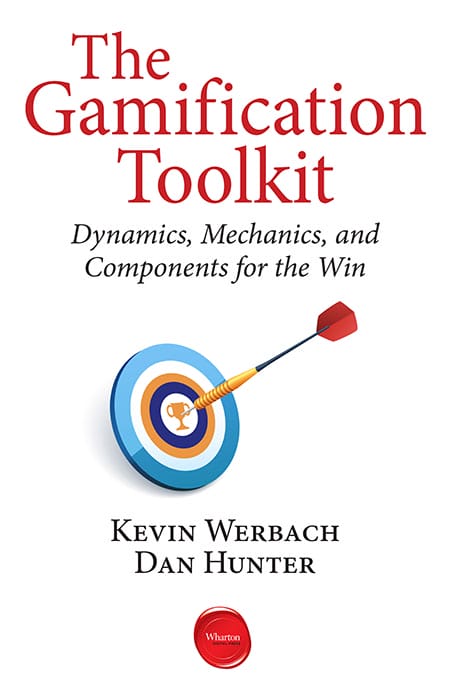
“The Gamification Toolkit,” which provides essential ingredients to take gamification to the next level
When The Economist covered the new book For the Win three years ago, it referred to gamification as a “management craze.” Since then, gamification has proved to be much more than a fleeting fad; it is a global movement. The book by Kevin Werbach, an associate professor in Wharton’s Legal Studies and Business Ethics Department, and Swinburne Law School Dean Dan Hunter has been published globally in English, Chinese, Japanese, Korean, Russian and Spanish, and more than a quarter-million people have taken Werbach’s gamification course on Coursera.
Now, in their new ebook The Gamification Toolkit, also published with Wharton Digital Press, Werbach and Hunter go deeper into the key game elements and provide readers with the tools to take gamification to the next level. The following essay by Werbach and Hunter is excerpted from the ebook.
Jeff Atwood, a software entrepreneur, found most online discussion forums useless. The problem, he realized, was that participants were only involved to serve their own needs. They had no incentives to work together to create the best information resource. Atwood found the solution in a surprising place: “Counter-Strike,” a team-based, first-person shooter video game. In “CounterStrike” and similar games, he realized, cooperation was the optimal strategy. Players who wanted to win had to excel at working together. Atwood and his co-founder, Joel Spolsky, put those insights to work in creating Stack Overflow, now one of the largest question-and-answer sites on the Web.
Although Atwood modeled Stack Overflow on games like “CounterStrike,” that didn’t mean sticking gun battles between terrorists and counterterrorists into discussion forums. The site he and Spolsky developed looks nothing like a game. Instead, it looks like software code: structured, content rich, color coded, data heavy. Just what the target users—software developers—would relate to.
Peel back the surface, though, and Stack Overflow runs exactly like a game. Players receive points, earn badges, gain new abilities, issue challenges, level up and compete for rewards based on their participation in online forums. With these techniques, Stack Overflow motivates users to devote time and effort to answering questions, editing responses and monitoring posts, producing a largely self-regulating community.
These design patterns are what we call “game elements.” They are what allow you to create something game-like that is not, itself, a game.
In For the Win, we offered a step-bystep process for designing a gamification project. As part of Step 4: Devise Activity Loops, we introduced game elements such as points, badges and leaderboards (PBLs) as starting tools for your gamification project. We showed how these game elements fit within a broader framework. This framework involves three types of elements, which we labeled Dynamics, Mechanics and Components.
Dynamics are the elements that exist at the 30,000-foot level, which provide motivations through features like narrative or social interaction.
Mechanics are the elements that drive player involvement. They include aspects like chance, turns or rewards. And Components are the specific examples of the higher-level features: elements like points, virtual goods or quests.
The hierarchy is significant. An architect needs to understand many concepts, from sheetrock to cantilevers, which operate at different levels of generality. The same is true of gamification design or any design practice. It’s critical to separate out the high-level design principles from the mid-level action structures and the surface-level manifestations. If you do nothing else but think about Dynamics, Mechanics and Components for your gamification project, you’ll significantly increase your chances of success.
























